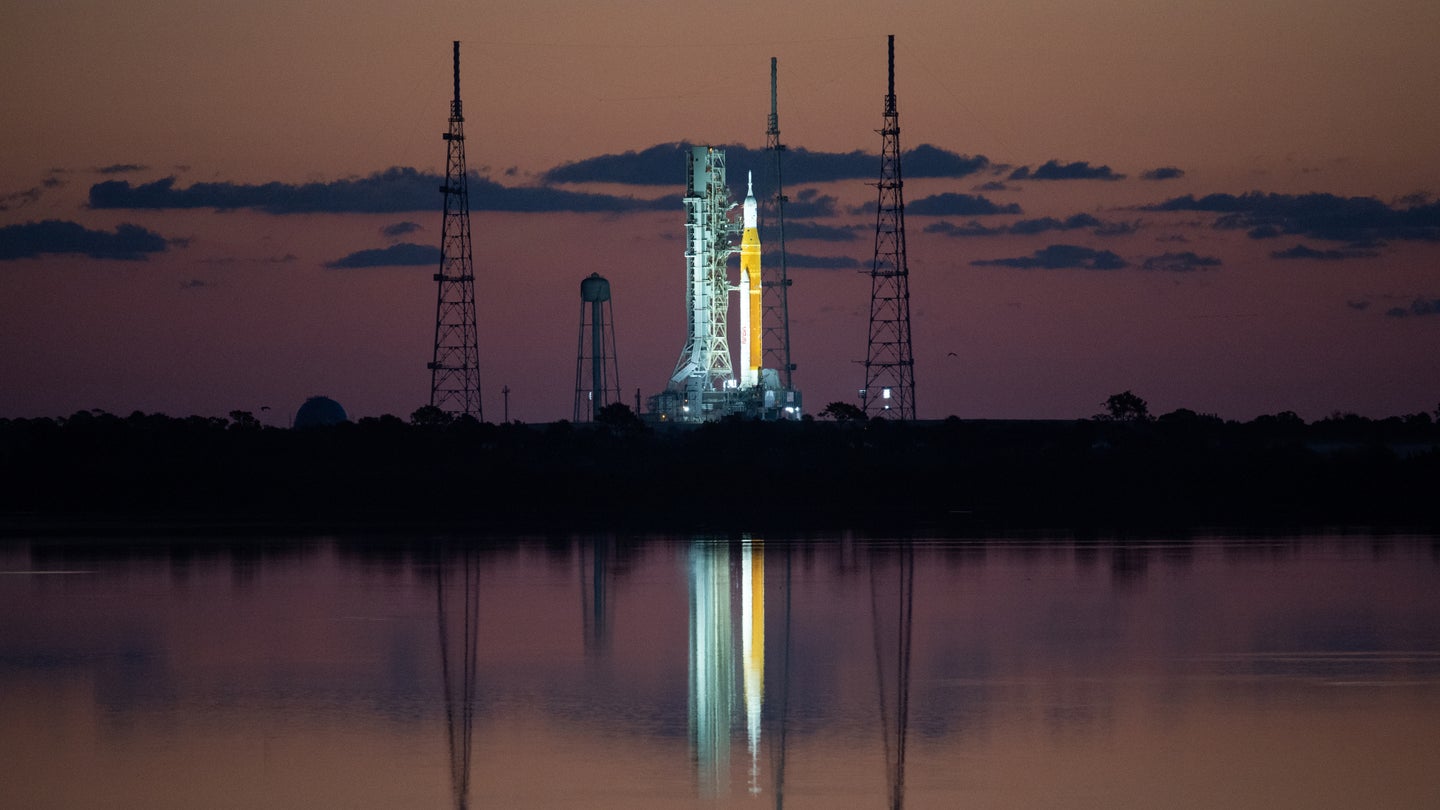
The first small step toward putting humans back on the moon is happening today—two days earlier than originally planned. And you don’t have to bake on scorching Florida beaches to watch as NASA prepares and launches the first of its Artemis missions, either: You can watch right from the comfort of your home.
The Artemis I rollout—where the rocket, hauled by a truly massive crawler-transporter, literally starts rolling toward the launch pad—was originally scheduled for Thursday, but was changed for unreported reasons. This uncrewed mission heralds the start of a new era of exploration and will serve as a test flight for the Orion spacecraft and the Space Launch System (SLS), which is the most powerful rocket NASA has ever built.
How to watch the Artemis I rollout
Live coverage of the rollout started at 3 p.m. Eastern Standard Time, and the “mega moon rocket” (as NASA has called it) is expected to actually start moving around 9 p.m. You can watch on the NASA TV website or the Kennedy Space Center’s YouTube channel.
Tune in for the main event and you’ll see the crawler-transporter begin carrying the SLS and the Orion spacecraft from the Vehicle Assembly Building to the launch pad (Launch Complex 39B, if you’re wondering). In a previous run-through, it took more than 10 hours to move the 322-foot-tall rocket to its liftoff location at the speed of under 1 mph, so chances are you’ll have time to catch it.
This will be the first 4 miles of the mission, which is expected to cover another 1.3 million miles over 42 days as it circles the moon.
How to watch the Artemis I launch
Artemis I is expected to lift off from the Kennedy Space Center on Aug. 29—the launch window opens at 8:33 a.m. that day. Alternate dates are Sept. 2 and Sept. 5. It’s too late to purchase tickets to the main visitor complex, but you can watch the SLS rockets soar into the sky on NASA TV, NASA’s official broadcast, or NASA’s mobile app.
What to expect from future Artemis missions
Astronauts haven’t been on the moon since the last Apollo mission in 1972, and Artemis III will carry the first woman and person of color to Earth’s only natural satellite. Subsequent missions intend to send people to Mars.
But for now, we’re witnessing a fresh start to space exploration, and if all goes as planned, Artemis I will ensure NASA and the astronauts on future missions are well-prepared to face the challenges of traveling beyond Earth’s atmosphere.
The post How to livestream NASA’s Artemis mission, from prep to launch appeared first on Popular Science.
from Popular Science https://ift.tt/3kuFTWx



0 Comments